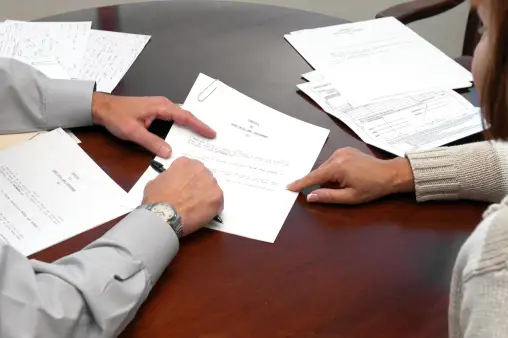Guardianship cases in Texas are complex and sensitive, involving the legal appointment of an individual or entity to make decisions for another person who is unable to do so themselves. This responsibility often arises due to age, incapacity, or disability. The court’s role in these cases is pivotal, ensuring that the rights and well-being of the person needing guardianship (the ward) are protected while also overseeing the actions of the guardian. This article delves into the intricacies of the court’s involvement in Texas guardianship cases, shedding light on the processes, responsibilities, and challenges involved.
Understanding Guardianship in Texas
Before exploring the court’s role, it’s essential to grasp what guardianship entails. In Texas, guardianship can be categorized into two main types: guardianship of the person and guardianship of the estate.
Guardianship of the Person
This type involves decisions about the ward’s personal care, living arrangements, medical treatment, and daily activities. The guardian is responsible for ensuring the ward’s well-being and quality of life.
Guardianship of the Estate
This type involves managing the ward’s financial affairs, including paying bills, managing property, and handling investments. The guardian must act in the ward’s best financial interest, maintaining accurate records and avoiding conflicts of interest.
Guardianships can also be temporary or permanent, depending on the ward’s needs and the circumstances surrounding the case.
Initiating a Guardianship Case

The journey of a guardianship case typically begins with filing an application in a Texas probate court. Any interested party, such as a family member, friend, or even a state agency, can submit this application. The court then appoints an attorney ad litem to represent the ward’s best interests and ensures that the ward’s rights are upheld throughout the process.
Application Process
- Filing the Application: The interested party files a guardianship application in the county’s probate court where the ward resides. The application must include detailed information about the ward, the proposed guardian, and why guardianship is necessary.
- Notice and Service: The court ensures that notice of the guardianship application is served to the ward and other interested parties, such as close relatives. This step ensures that all parties know the proceedings and can participate.
- Appointment of Attorney Ad Litem: The court appoints an attorney ad litem to represent the ward and protect the ward’s rights and interests throughout the guardianship process.
The Court’s Evaluation Process
Once the application is filed, the court embarks on a thorough evaluation process to determine whether guardianship is necessary and, if so, who should be appointed as the guardian. This process involves several key steps:
Investigation and Reports
The court may appoint a court investigator to conduct an independent investigation. This includes interviewing the ward, the proposed guardian, and other relevant parties. The investigator then submits a report with findings and recommendations to the court.
Medical and Psychological Assessments
The court often requires medical and psychological assessments of the ward to ascertain their capacity and the extent of their needs. These assessments provide crucial information to the court when making an informed decision.
Hearing
A guardianship hearing is scheduled, during which evidence is presented, and testimonies are heard. The court examines the evidence, listens to the ward’s wishes (if they can express them), and considers the recommendations of the attorney ad litem and other experts.
Decision
The court decides whether guardianship is necessary based on the evidence and testimonies. If it is deemed necessary, the court appoints a suitable guardian who will consider the ward’s best interests.
Ongoing Court Oversight
The court’s involvement doesn’t end with the appointment of a guardian. Ongoing oversight is a crucial aspect of the guardianship process, ensuring that the guardian fulfills their responsibilities ethically and competently. This oversight includes:
Annual Reports
Guardians are required to submit annual reports detailing the ward’s condition and the status of their estate. These reports provide transparency and accountability, allowing the court to monitor the guardian’s actions.
Periodic Reviews
The court may schedule periodic reviews to assess the ward’s condition and the guardian’s performance. These reviews help identify any issues or concerns that may arise during the guardianship.
Guardian Training
Texas courts often mandate that guardians undergo training to understand their duties and responsibilities better. This training equips guardians with the knowledge and skills to fulfill their roles effectively.
Addressing Complaints
If concerns or complaints about the guardian’s conduct are raised, the court investigates and takes appropriate action. This may include removing the guardian and appointing a new one if necessary.
Modifying or Terminating Guardianship
Circumstances can change, necessitating modifications or termination of the guardianship. The court plays a vital role in these processes as well:
Modification
If the ward’s condition improves or their needs change, the guardian or another interested party can petition the court to modify the guardianship. The court reviews the request, conducts an evaluation, and decides on the appropriate modifications.
Termination
The court can terminate guardianship if the ward regains capacity, passes away, or determines guardianship is no longer necessary. During the termination process, the court holds a hearing where parties present evidence to support the termination request.

Challenges and Considerations
While the court’s role in Texas guardianship cases is essential for protecting the ward’s rights, several challenges and considerations must be addressed:
Balancing Autonomy and Protection
The court must carefully balance the ward’s autonomy and the need for protection. This balance can be challenging, especially when the ward’s capacity fluctuates or is difficult to assess.
Resource Constraints
Courts often face resource constraints, including limited personnel and funding, impacting the efficiency and effectiveness of guardianship proceedings and oversight.
Family Dynamics
Guardianship cases often involve complex family dynamics with conflicting interests and emotions. The court must navigate these dynamics to make decisions in the ward’s best interests.
Abuse and Exploitation
Guardianship can sometimes lead to abuse or exploitation of the ward by unscrupulous guardians. The court’s ongoing oversight is crucial in preventing and addressing such issues.
Real-Life Examples: The Court in Action
To illustrate the court’s role in Texas guardianship cases, let’s explore a couple of real-life examples:
Case of Elderly Parent
A concerned daughter, Jane, filed for guardianship of her elderly mother, Mary, who had been diagnosed with dementia. The court appointed an attorney ad litem to represent Mary and ordered medical assessments. During the hearing, Jane presented evidence of her mother’s incapacity and her ability to care for her. The court evaluated the evidence, interviewed Mary, and appointed Jane as the guardian of the person and estate. The court’s ongoing oversight ensured Jane managed her mother’s affairs responsibly, providing peace of mind to the family.
Case of a Disabled Adult
Tom, a 25-year-old with a developmental disability, needed a guardian to assist with daily living and financial management. His parents filed for guardianship, and the court appointed a court investigator and attorney ad litem. The court reviewed medical reports, interviewed Tom, and assessed the parents’ suitability as guardians. After a thorough evaluation, the court-appointed Tom’s parents as co-guardians, emphasizing the need for periodic reviews to monitor Tom’s well-being.
Additional Roles and Responsibilities of the Court
The court may involve itself in various other aspects of guardianship cases in addition to the standard processes and oversight:
Emergency Guardianships
When immediate action is necessary to protect the ward, the court can issue emergency guardianship orders. Temporary guardianships typically last for a short term and immediately protect until a full hearing occurs.

Court-Ordered Mediation
In cases where there are disputes among family members or other interested parties, the court may order mediation. Mediation is when a neutral third party helps the disputing parties reach a mutually acceptable agreement, potentially avoiding a prolonged court battle.
Successor Guardians
If a guardian can no longer fulfill their duties due to illness, death, or other reasons, the court may appoint a successor guardian. This process ensures that the ward receives the necessary care and management without disruption.
The Role of the Court in Specialized Guardianships
Certain guardianship cases involve unique circumstances and require specialized court intervention:
Guardianship of Minors
While this guide primarily focuses on adults, guardianship of minors is another critical area. When a child’s parents cannot care for them, the court appoints a guardian to ensure their well-being and manage their affairs until adulthood.
Guardianship for Individuals with Severe Mental Illness
In cases involving individuals with severe mental illness, the court must navigate complex medical and legal issues. The court works closely with mental health professionals to ensure the guardian can provide the necessary care and support.
Legal Safeguards and Protections
To protect the rights and interests of wards, Texas law provides several legal safeguards:
Bill of Rights for Wards
Texas law includes a Bill of Rights for Wards, which outlines the rights of individuals under guardianship. These rights include the right to privacy, the right to dignified treatment, and the right to participate in decisions affecting their lives.
Limited Guardianships
Whenever possible, the court aims to establish limited guardianships that only grant the guardian authority over certain aspects of the ward’s life. This approach promotes the ward’s independence while providing necessary support.
The Future of Guardianship in Texas
As society evolves, so too does the legal landscape surrounding guardianship. Several trends and developments may impact the future of guardianship in Texas:
Technological Advancements
Advances in technology could streamline the guardianship process, making it easier for courts to monitor guardianships and for guardians to manage their responsibilities.
Legislative Changes
Ongoing legislative
efforts aim to improve guardianship laws, enhance protections for wards, and provide better support for guardians. All parties involved in guardianship cases must stay informed about these changes.
Conclusion: The Court’s Pivotal Role
In Texas guardianship cases, the court vigilantly guards justice, ensuring it upholds the ward’s rights and well-being at every stage. From initiating the guardianship process to ongoing oversight and addressing challenges, the court’s involvement is indispensable. By balancing protection with autonomy, conducting thorough evaluations, and providing ongoing oversight, the court ensures that guardianship serves its intended purpose – safeguarding those who cannot protect themselves. As society evolves, the court’s role in guardianship cases remains a cornerstone of justice, compassion, and integrity.







